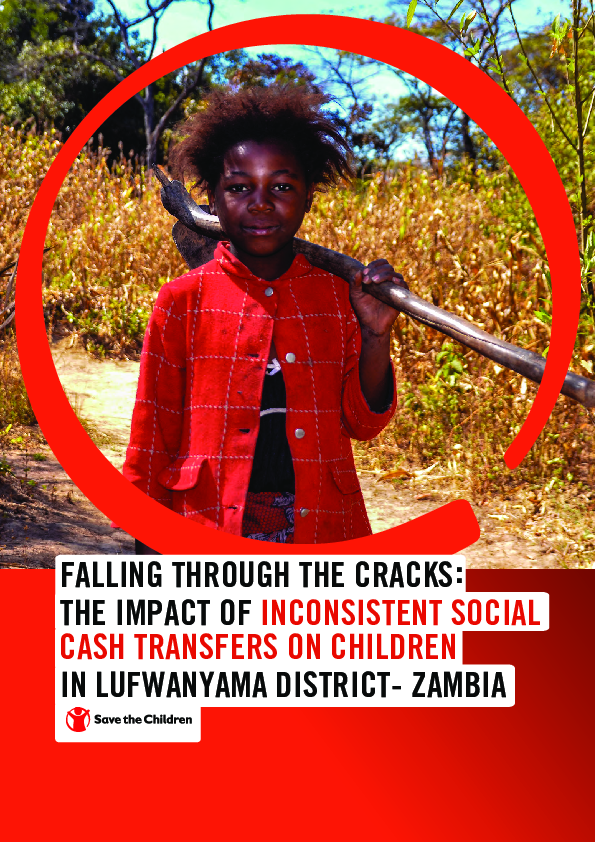
Study: Research
Falling Through the Cracks: The impact of inconsistent Social Cash Transfers on children in Lufwanyama district, Zambia
Publication year:
2021
English
Format:
pdf (4.1 MiB)
Publisher:
Save the Children Finland,Save the Children International,Save the Children Zambia
About 60 percent of the children live in poor households in Zambia. Most of these children live in rural areas where the incidence of extreme poverty is five times higher at 76.6 percent than urban levels at 12.8 percent, raising the need and significance of social protection (SP) programs. To cushion the effects of poverty, the Government has been implementing a Social Cash Transfer (SCT) program. However, in the recent past, SCT disbursements have been irregular, with severe implications on households that depend on them.
Save the Children is implementing a Child Sensitive Social Protection Project (CSSP) in Lufwanyama District on the Copperbelt Province that was initiated in January 2017. The project rests on three pillars:
- Access for children and their families to social protection programs – both formal, as in national Social Protection programmes and informal such as community-based support groups;
- The capacity of service providers to deliver quality services relevant for social protection;
- Child sensitivity of service providers, social protection recipients, their households/families (parents and caregivers), and the community at large.
However, one of the challenges for the CSSP project has been the inconsistent nature of the SCT payments on which the child sensitivity component depends. In order to better understand how the irregular SCT payments have affected the beneficiaries, Save the Children International (SCI) commissioned a research study to find out the depth of the problem.
This “compendium of case studies” demonstrates how inconsistency in the disbursement of social cash transfers in Zambia has negatively impacted the development, survival, learning, and protection of children in vulnerable and marginalized households.
Read full abstract
Authors
View & Download
Document information
Authors
Format
Content type
Country
Region
Rights
© Author/Publisher
Keywords
Found a mistake? Help us improve!
If you have noticed a document assigned to the wrong author or any other inaccuracies, let us know! Your feedback helps us keep our data accurate and useful for everyone.
Share
Link
